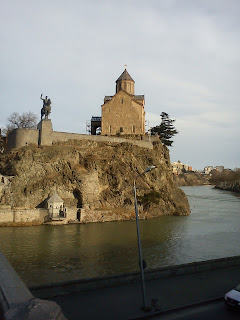International Organizations and Sustainable Tourism – WTO 4, climate change
Ciao!
Here we are back with WTO!
Check previous posts for more info. Today's topic is WTO's commitment to fight climate change. Hope you like it.
In the WTO analysis, tourism contributes to climate change in several ways. A generic estimate shows that tourism is responsible for 5% of CO2 emissions into the atmosphere, and consequently, based on the radiative forcing, 4.5% of global warming.
Within the tourism sector, the black jersey belongs to transport, which is responsible for 75% of all emissions. This is an aggregated data and includes the planes, trains, wheel transport. Disaggregating the data, flights are the most polluting (from 54 to 75%), therefore 40% of the total tourism carbon footprint, while road and rail transport is around 13%.
Second to the transport sector, the hospitality sector is the most polluting. Accommodation for tourism purposes whether in hotels or in other forms causes 20% of emissions. The figure includes air conditioning, heating, electricity and gas used for bars, restaurants, swimming pools, etc. Obviously, the figure again should be disrupted and assessed pondering the sizes and the peculiarities of the type of reception. There is a significant difference in energy use between an old hotel, built with little considerations for energy saving, and a camping.
There are also tourist attractions that have an aggregate value of 3.5%. This group includes theme parks and museums, and important distinctions should be made here too.
From these figures, the WTO moves steps to address and mitigate the impact of tourism on climate change.
The WTO focuses on the use of alternative fuels and hybrid vehicles to reduce the impact of tourism on greenhouse gas emissions and to reduce energy consumption. As for the overnight stay sector, declined in all their varieties and possibilities, the guiding principle remains is to exploit technologies that reduce energy consumption, and shift from highly polluting and non-renewable energies to greener ones. These measures are not meant to set specific standards of housing parameters, as it is advisable that tourism destinations to develop their own, maximizing local resources and peculiarities. Each destination therefore has room to search for its own best housing solution that contributes to the reduction of emissions through the use of locally developed materials and techniques or technologies. Ideally, the know-how is then shared, so that other tourist destinations or inhabited places can be inspired, adopted, amended, in a constructive and dialogical way.
The issue of air transport is more difficult. It is a challenge that must
be addressed in synergy with all
the stakeholders, and therefore the WTO
cooperates with the International Civil Aviation Organization (ICAO) in search
of options for pollution and emission reduction, included through incentives
and taxation systems weighted on the polluting impact. Keep a low number of
flights or passengers as it happened during the pandemic sounds a not realistic
solution, and to many destinations that may have legitimate concerns,
undesirable.
Stigmatizing a transport system would have a strong discriminating effect towards certain destinations, which, due to their position or conformation, cannot be reached with less polluting means than airplanes. Some of these destinations are located in remote areas and have a limited access to other forms of economic development. So tourism plays an even more important role in the context of their economic and demographic sustainability than in others, which are instead well connected and integrated in economic and commercial networks offering a wide range of choices and earning opportunities.
This overview already highlights the difficulty of an industry such as tourism of fully embracing the cause of sustainability. Reconciling the different needs of a market that necessarily has to create more travelers to grow with the reduction of the impact of travels is complicated. While many travelers are sensible and committed to choose travel options that are as green as possible - for example by choosing to travel by rail to a destination rather than air travel where there are both possibilities – assuming that each tourist would regularly take such choices is unrealistic at the present stage. The purposes of using tourism to alleviate conditions of poverty and to reduce its environmental impact must therefore be continuously related and elaborated.



Commenti
Posta un commento